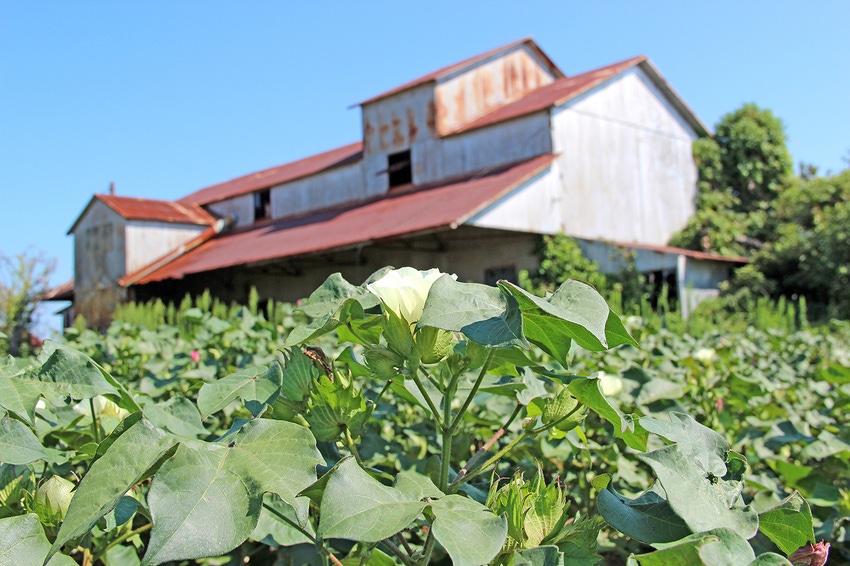September 28, 2015

Cotton is the “horse we rode in on” in this part of the world, but in recent years we have moved over to grain crops in a big way here in the Hills of Mississippi. We have been successful with well-managed corn in our rotation programs, but this crop has also failed us in many cases when planting was not accomplished on time or if soil fertility, weed control, and other issues got in the way.
Soybeans have been profitable for many producers during the last few years when we were blessed with midsummer rains. However, this year many soybean producers are coming up short as the result of too much rain early followed by combined drought and heat that came to visit us in early July and stayed all summer. A few dryland farms are getting “respectable” soybean yields in the 35 to 45 bushels per acre range, but far too many of our fields are producing yields reminiscent of the 1980s — between 15 and 25 bushels per acre.
When either corn or soybeans encounters significant challenges from environmental stresses combined with marginal management, they may quickly “crash” from yields approaching their potential all the way down to “disaster” levels, much as we are seeing in soybeans this year.
The few late-planted fields of corn are also demonstrating this principle.
Cotton is a very different kind of plant from soybeans or corn in that it can deal with stresses as they arrive and then rebound to set and mature bolls as opportunities present themselves.
Variety selection is extremely important with cotton since adaptation is strongly influenced by the major factors (like soil type, weather, and production system) as well as many subtle factors. I will just say that cotton is a complex plant, but in some ways its complexities are its advantages in that it can deal with adversity as no other crop plant we grow in this region.
This year as we occupy ourselves with the harvest, we can all feel the coming storm over how to stay in the business of farming in the face of these conditions. I will offer an option that I doubt will be attractive to many producers who have expanded operations in recent years, but then I could be surprised. This option is that of conventional cotton grown with limited inputs. The idea will also work with transgenic varieties, but technology fees complicate the program.
Fortunately there are some good conventional varieties to choose from. They include UA222, CT110, and CT212 at the top of my list, followed by a couple of others that can also perform well.
My suggestion is to plant these varieties in fields that have previously been in corn, soybeans, or peanuts if possible, preferably following a cover crop of wheat that will be shredded or rolled to provide mulch.
I prefer a skip row pattern on good soil with a reduced seeding rate of 2 per foot of row in 30-inch spacing or 2.5 in 38iinch spacing with “very limited�” tillage. This allows for sunlight to promote fruiting and to discourage insects and diseases like boll rot.
Nitrogen rate should be around 70 pounds per acre along with good P, K and soil pH values. Also take note of micronutrients and the P-to-K ratio which should be from 1:2 to 1:4.
We don’t have to worry about boll weevils and we have excellent insecticides to use in the event of high levels of other pests.
Otherwise a “conservative” approach should be followed. In short, we should be able to grow cotton much as our grandfathers did. The yields may not impress everyone at the coffee shop, but profits should be as good as anything else we can grow.
We still have the infrastructure so let’s use it.
As for weed control, there are systems that work well there, too, and they control glyphosate-resistant weeds if they are applied correctly.
The important thought is that cotton will produce under the most adverse conditions our Southern environment can muster. It’s something to think about.
You May Also Like




